Birds are an essential part of Pasco’s natural environment. Pasco is home to a wide variety of birds, both native and migratory, that can be seen in its many parks, forests, and wetlands.
Pasco is an excellent place for bird watching, as it is home to many species, including songbirds, raptors, waterfowl, and shorebirds.
In this introduction, we will explore the different types of birds found in Pasco, their habitats, and the best places to go bird watching.
21 Birds to Watch in Pasco
Pasco is a county in Florida that offers a rich diversity of birdlife for enthusiasts and casual observers alike. Whether looking for rare or common species, you will find them in Pasco’s varied habitats, such as coastal marshes, pine forests, and river parks.
Here are 21 birds that you should watch out for when you visit Pasco.
1. Roseate Spoonbill
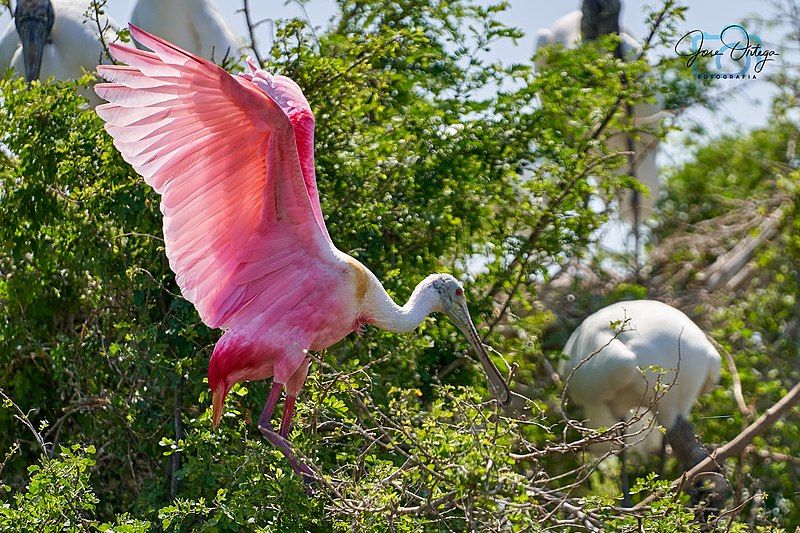
The roseate spoonbill is a species of wading bird belonging to the Threskiornithidae family, including the ibis and the spoonbill. It is found in South and North America, where it is a resident breeder.
The distinctive pink color of the roseate spoonbill is derived from its diet, which consists of carotenoid pigments such as canthaxanthin. This is the same pigment found in the American flamingo.
The roseate spoonbill is a very social bird, often gathering with other wading birds in large groups. They can be found in various habitats, including coastal marshes, lagoons, mangroves, and estuaries.
They use their long, thin bills to search for food in shallow waters, feeding mainly on crustaceans, mollusks, and aquatic insects.
The roseate spoonbill is an integral part of the ecosystem, helping to maintain a balanced food chain by consuming large numbers of invertebrates.
| Kingdom | Animalia |
| Phylum | Chordata |
| Class | Aves |
| Order | Pelecaniformes |
| Family | Threskiornithidae |
| Genus | Platalea |
| Species | P. ajaja |
2. Sandhill Crane
The sandhill crane is a large species in North America and northeastern Siberia. It is aptly named, as its preferred habitat is often found in open, grassy areas such as the Platte River on the edge of Nebraska’s Sandhills on the American Great Plains.
This bird is easily recognizable as it has a long, thin neck and long legs, with a wingspan of around 5 feet. Its grayish-brown body is topped by a red, bald patch on its crown.
The sandhill crane is an important species, as it plays a role in the ecosystem by feeding on various insects, grains, and other vegetation.
It is also an essential part of Native American culture, as many tribes believe the sandhill crane symbolizes strength and perseverance.
| Kingdom | Animalia |
| Phylum | Chordata |
| Class | Aves |
| Order | Gruiformes |
| Family | Gruidae |
| Genus | Antigone |
| Species | A. canadensis |
3. White Ibis
The American white ibis is a species of bird belonging to the ibis family, Threskiornithidae. It is a widespread bird species across a large area of the United States, from Virginia to the Gulf Coast and southward through the coastal New World tropics.
This species of ibis prefers many habitats, including marshes, swamps, and tidal flats. It feeds on various fish, crustaceans, and other small aquatic creatures.
The American white ibis is known for its distinctive white plumage, which makes it easy to identify. Its long, curved bill and long legs make it well-suited for wading in shallow water. Its call is a loud kro-kro-kro, which can be heard over long distances.
This species of ibis is considered near threatened due to habitat loss and other human-caused disturbances. Conservation efforts are being made to protect this species and its habitats.
| Kingdom | Animalia |
| Phylum | Chordata |
| Class | Aves |
| Order | Pelecaniformes |
| Family | Threskiornithidae |
| Genus | Eudocimus |
| Species | E. albus |
4. Florida Scrub Jay
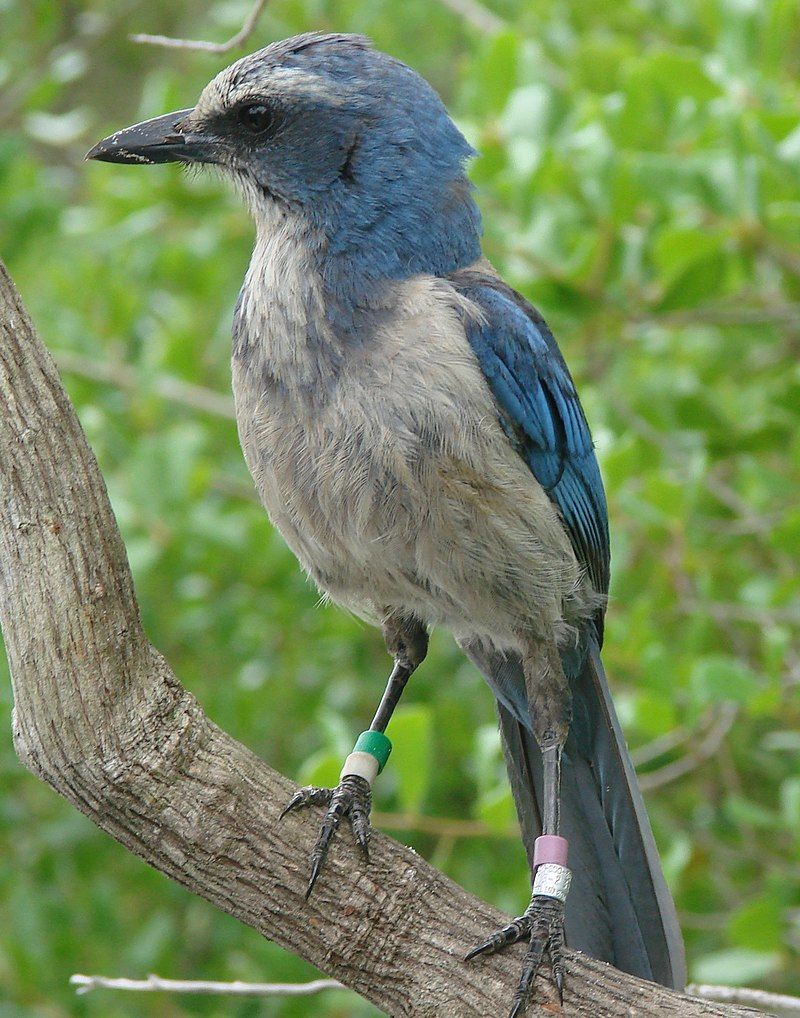
The Florida scrub jay is a species of scrub jay native to North America and is the only type of bird endemic to Florida. This means it is only found in Florida and not elsewhere in the United States.
This makes the Florida scrub jay a unique bird species since only 15 species are native to the continental United States.
This makes the Florida scrub jay a sought-after bird for bird watchers and birders, as they can observe and appreciate this species that can only be found in its native habitat.
The Florida scrub jay is a small bird with a grayish-brown back and wings, a white throat and breast, and a black-and-white striped head. This species of scrub jay is known for its intelligence and vocalizations and is often seen in family groups, foraging for food.
The Florida scrub jay is an integral part of the natural environment of the state of Florida, and its conservation is essential to maintain the area’s natural beauty.
| Kingdom | Animalia |
| Phylum | Chordata |
| Class | Aves |
| Order | Passeriformes |
| Family | Corvidae |
| Genus | Aphelocoma |
| Species | A. coerulescens |
5. Red-headed Woodpecker
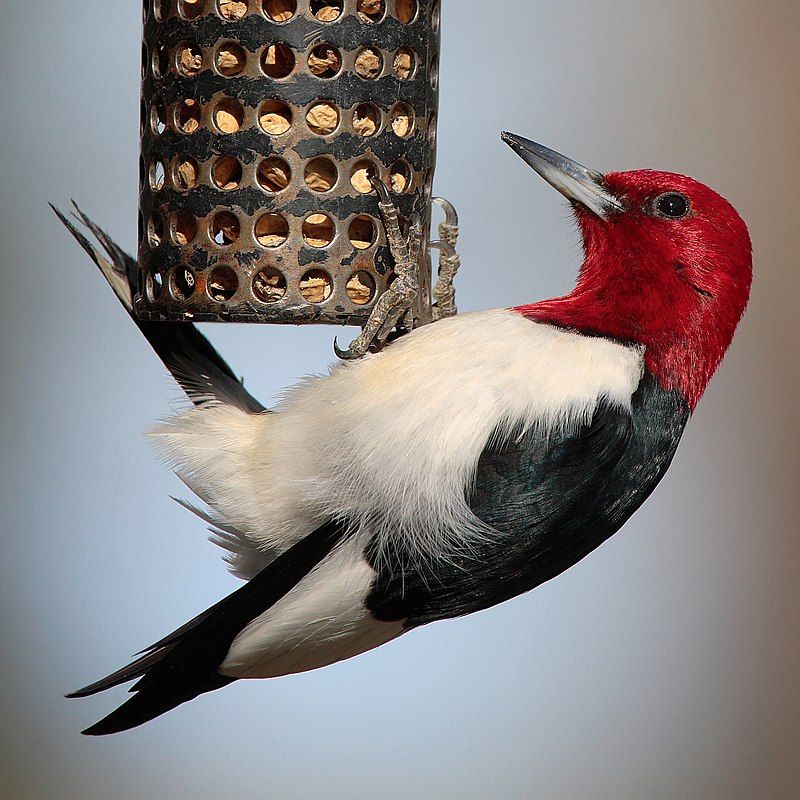
The red-headed woodpecker is a beautiful bird found in temperate North America. It is a mid-sized woodpecker with a striking redhead and black body.
This bird is known for its loud, distinct call, which can be heard in open country across southern Canada and the east-central United States. These areas provide the ideal habitat for the red-headed woodpecker, where it can find plenty of insects to feed on.
The woodpecker can often be seen perched on trees or fence posts, searching for food. It also loves to feed on nuts, berries, and seeds.
In addition to searching for food, the red-headed woodpecker is also quite territorial and will often be seen defending its territory from other woodpeckers. During breeding season, the red-headed woodpecker will establish its territory and use it to attract a mate.
Once the pair have found each other, they will build a nest in a dead tree or snag to raise their young. The red-headed woodpecker is an integral part of the temperate North American ecosystem, and its presence is a welcome sight to many people.
| Kingdom | Animalia |
| Phylum | Chordata |
| Class | Aves |
| Order | Piciformes |
| Family | Picidae |
| Genus | Melanerpes |
| Species | M. erythrocephalus |
6. Bald Eagle
The bald eagle is a majestic bird of prey found in North America. It is a large bird with a wingspan of up to 8 feet and is easily recognizable by its white head and tail.
It is a sea eagle, meaning it primarily hunts for fish in the water but will also feed on small mammals and carrion. There are two known subspecies of the bald eagle, the northern bald eagle and the southern bald eagle, which differ in size and appearance.
The bald eagle and the white-tailed eagle are considered a species pair, meaning they occupy the same habitat and hunt for the same prey. The white-tailed eagle is found mainly in the Palearctic, while the bald eagle is in North America.
Both species are apex predators, meaning they are at the top of the food chain in their habitats. Despite their fierce reputation, these birds are shy and usually avoid humans.
| Kingdom | Animalia |
| Phylum | Chordata |
| Class | Aves |
| Order | Accipitriformes |
| Family | Accipitridae |
| Genus | Haliaeetus |
| Species | H. leucocephalus |
7. Eastern Bluebird
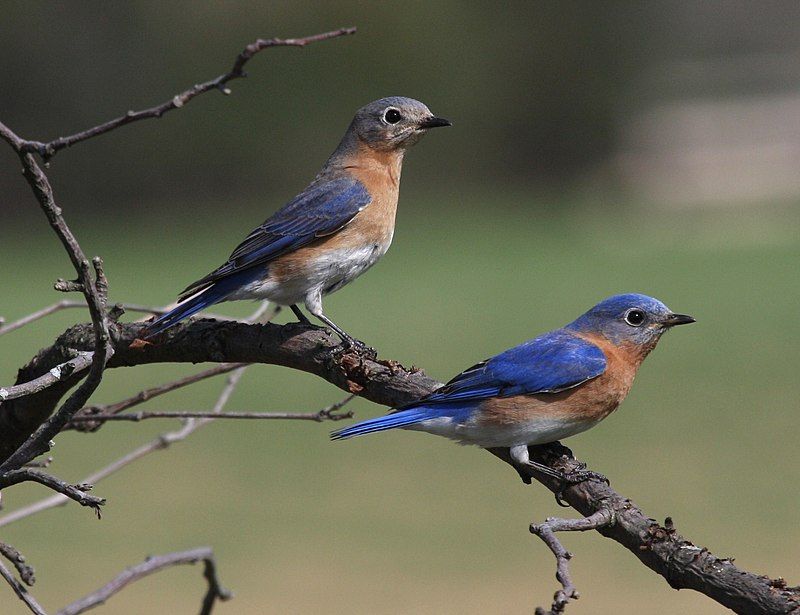
The Eastern Bluebird is a beautiful bird native to North America. It is a type of thrush, a small songbird with a musical call. This bird is found in open woodlands, farmlands, and orchards, making it easy to spot in its natural habitat.
Its eye-catching bright blue breeding plumage on males is why it is so popular among birders. This beautiful blue plumage is especially visible on a wire or open perch. Birders love to observe and admire these birds in their natural habitat.
In addition to being beautiful, the Eastern Bluebird is also a migratory bird, meaning it will migrate to different areas throughout the year. The Eastern Bluebird is a beloved bird that is admired by many.
Its stunning blue feathers and migratory habits make it a unique and fascinating species. Its presence in open woodlands, farmlands, and orchards makes it a great bird spot in its natural habitat.
Whether you are a beginner birdwatcher or a seasoned birder, observing this species will be an enjoyable experience.
| Kingdom | Animalia |
| Phylum | Chordata |
| Class | Aves |
| Order | Passeriformes |
| Family | Turdidae |
| Genus | Sialia |
| Species | S. sialis |
8. Black-bellied Whistling Duck
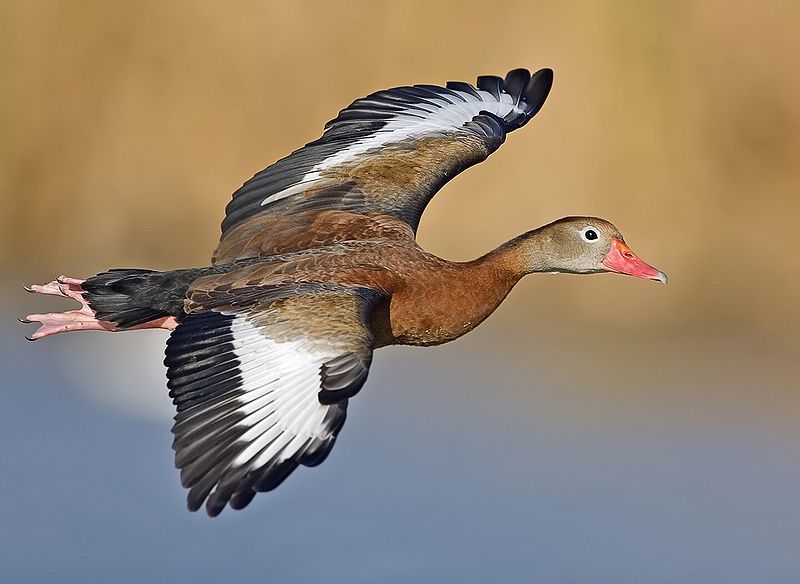
The black-bellied whistling duck, also formerly known as the black-bellied tree duck, is a species of whistling duck native to the Southern United States, Mexico, and tropical Central to South-central South America.
Before 2000, this species was primarily found in these regions, but since then, its range has expanded, and it can now be found all year round in much of the United States.
This duck is easily recognizable due to its unique black-and-white plumage and distinctive whistling call. Its diet consists mainly of aquatic invertebrates, such as insects, crustaceans, and mollusks.
In addition to its native range, this species has been introduced to many other parts of the world, such as the Caribbean, Europe, and Australia, where it is now considered an invasive species.
| Kingdom | Animalia |
| Phylum | Chordata |
| Class | Aves |
| Order | Anseriformes |
| Family | Anatidae |
| Genus | Dendrocygna |
| Species | D. autumnalis |
9. Red-shouldered Hawk
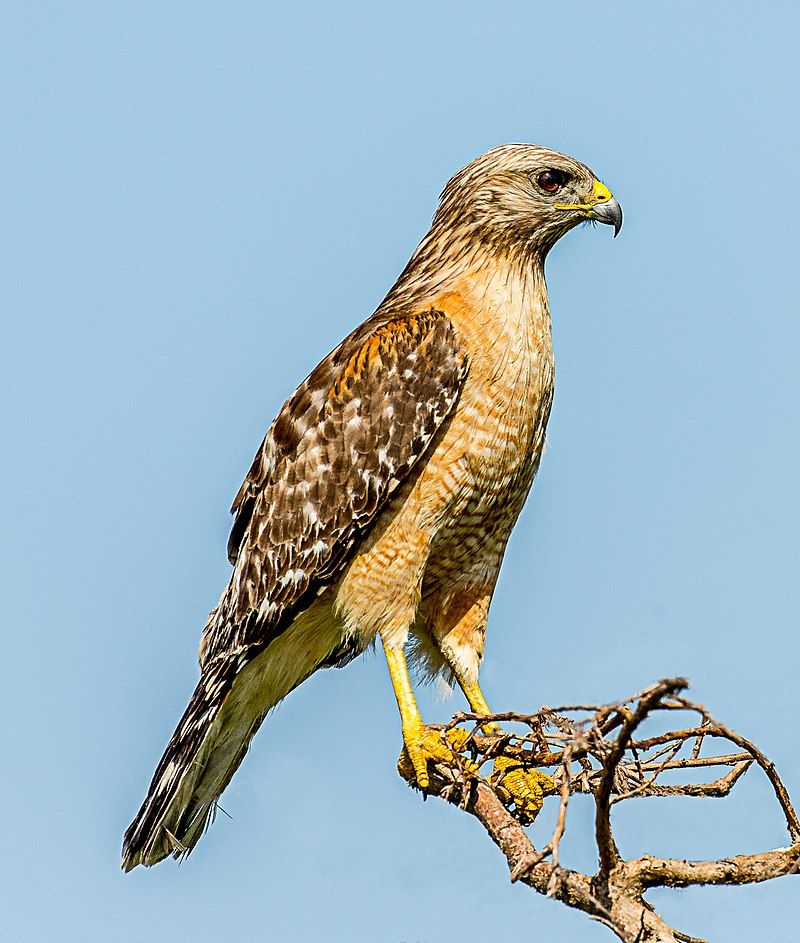
The red-shouldered hawk is a medium-sized buteo, a type of hawk found in North and Central America. Its breeding range extends from eastern North America, including the coast of California, up to northeastern-central Mexico.
This species is a permanent resident in most of its range, meaning it does not migrate as much as other species. However, northern populations of red-shouldered hawks tend to migrate southward during the winter months, usually to central Mexico.
This species is an integral part of the food chain in these regions, and its presence is vital for the health of the local ecosystems.
| Kingdom | Animalia |
| Phylum | Chordata |
| Class | Aves |
| Order | Accipitriformes |
| Family | Accipitridae |
| Genus | Buteo |
| Species | B. lineatus |
10. White-crowned Sparrow
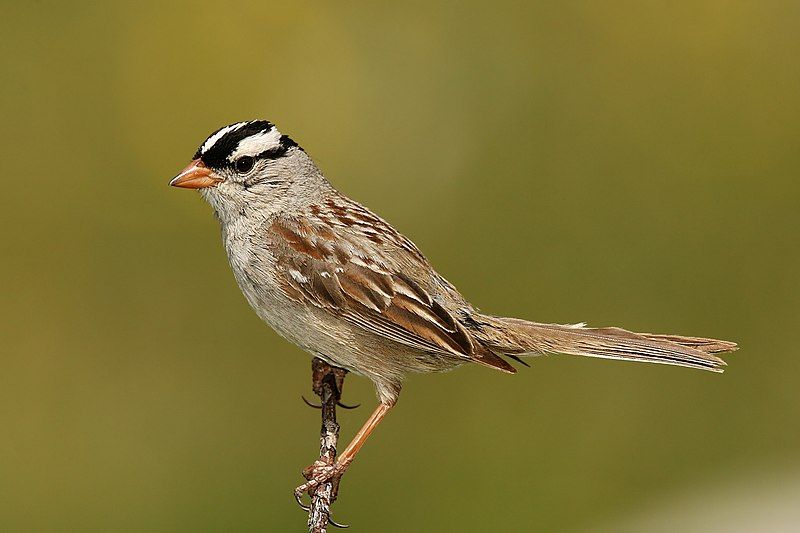
The white-crowned sparrow is a species of bird native to North America. It belongs to the passerine family and is a medium-sized New World sparrow family member.
The white-crowned sparrow is easily recognizable due to its distinctive markings, which include a grey face and black and white streaking on the upper head. This species is also known for its melodic chirps, which can be heard in parks and gardens throughout North America.
The white-crowned sparrow is a famous bird for birdwatchers, as it often frequents gardens and other areas with plenty of vegetation. The white-crowned sparrow is also a symbol of the North American wilderness, as it is one of the most common birds on the continent.
Its presence is a reminder of the beauty and diversity of the natural world.
| Kingdom | Animalia |
| Phylum | Chordata |
| Class | Aves |
| Order | Passeriformes |
| Family | Passerellidae |
| Genus | Zonotrichia |
| Species | Z. leucophrys |
11. Glossy Ibis
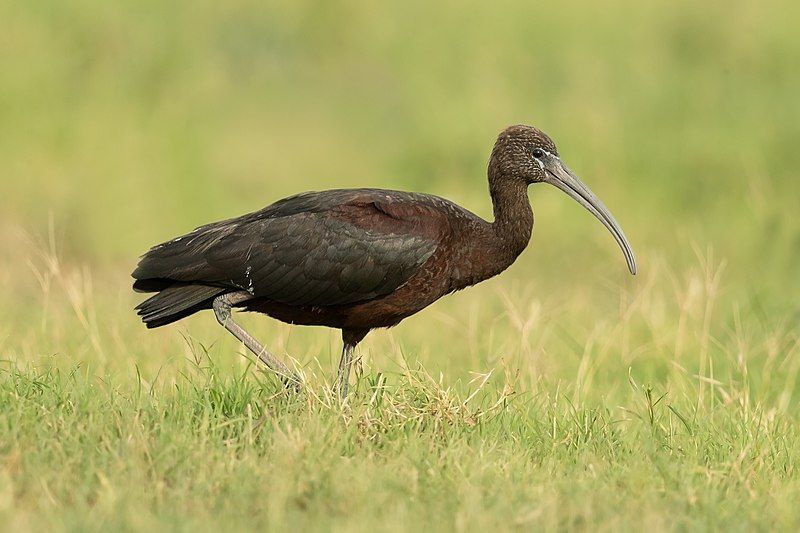
The glossy ibis is a water bird species belonging to Pelecaniformes and the family Threskiornithidae. This order includes many wading birds, such as herons, pelicans, and storks, while the Threskiornithidae family includes ibises and spoonbills.
The scientific name of this species is derived from Ancient Greek and Latin words “pleads” and “false,” respectively. Both terms mean “sickle,” which refers to the distinctive hooked shape of the bird’s bill.
The glossy ibis has a long, slender bill curved inwards, giving it a sickle-like appearance. This curved bill allows the bird to feed efficiently on various small aquatic animals and plants, including insects, worms, and frogs.
The glossy ibis is found in wetland areas worldwide and is an essential species in many ecosystems.
| Kingdom | Animalia |
| Phylum | Chordata |
| Class | Aves |
| Order | Pelecaniformes |
| Family | Threskiornithidae |
| Genus | Plegadis |
| Species | P. falcinellus |
12. Little Blue Heron
The little blue heron, a species of the Egretta species, is a small heron characterized by its dark coloring and two-toned bill. Juveniles of this species are entirely white, making them look quite similar to snowy egrets.
During the breeding season, however, adults of this species develop distinct coloration on their heads, legs, and feet. This coloration differentiates them from the juveniles and other species of herons.
Depending on the individual bird, the coloration can range from a pale blue to a deep shade of blue. The coloring is thought to be a form of sexual selection, helping the birds to identify potential mates better.
The little blue heron is an essential species in the ecosystem, as it helps to control the population of certain types of aquatic organisms, such as fish and amphibians. It is also a popular bird-watching species, as its distinctive plumage makes it easy to spot.
| Kingdom | Animalia |
| Phylum | Chordata |
| Class | Aves |
| Order | Pelecaniformes |
| Family | Ardeidae |
| Genus | Egretta |
| Species | E. caerulea |
13. Northern Cardinal
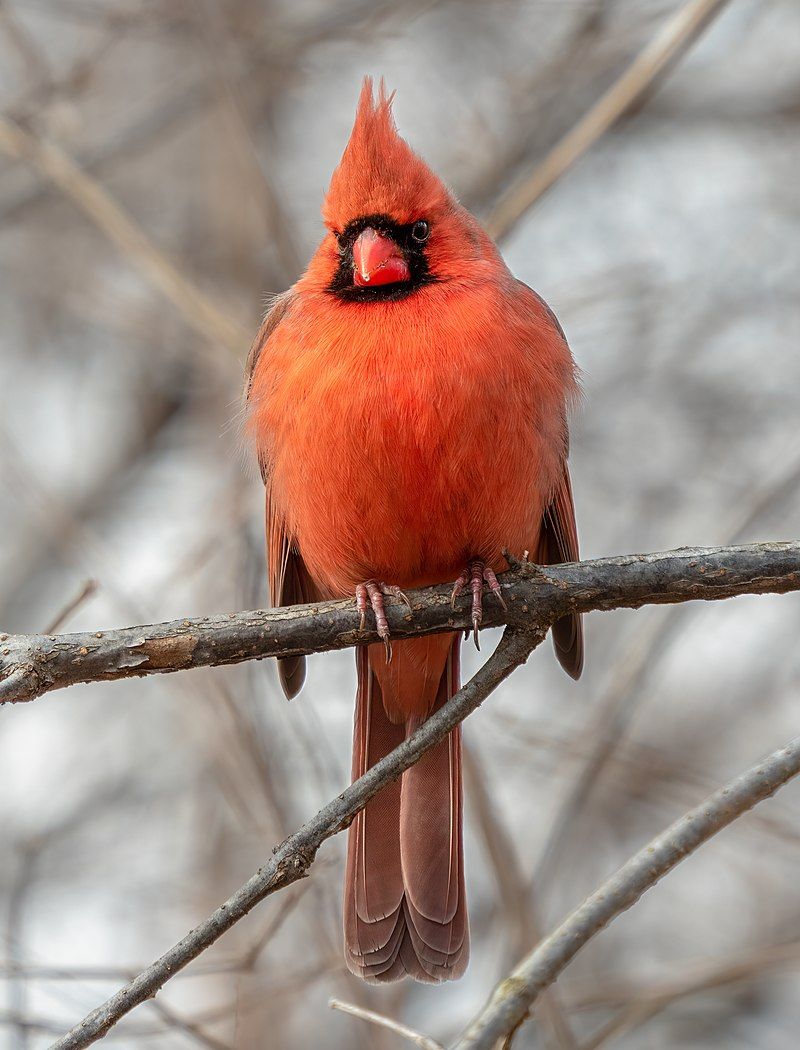
The northern cardinal, scientifically known as Cardinalis, is a bird species recognized for its bright red plumage. This species is called the redbird, common cardinal, red cardinal, or simply cardinal.
This bird can be found across much of the United States and parts of Mexico and Canada. The northern cardinal has a plump body, a crested head, and a pointed beak. The males and females of the species are strikingly different in appearance.
Male cardinals have a bright red plumage, while the female’s feathers are tinged with a dull brownish color. The northern cardinal is not only known for its beautiful colors but also for its unique song.
Its voice is described as a series of clear whistles, usually consisting of three to four notes. This species is a famous backyard bird often seen in bird feeders. They can also be seen in wooded areas, parks, and gardens.
The northern cardinal is an essential species that plays a vital role in maintaining the balance of the ecosystem.
| Kingdom | Animalia |
| Phylum | Chordata |
| Class | Aves |
| Order | Passeriformes |
| Family | Cardinalidae |
| Genus | Cardinalis |
| Species | C. cardinalis |
14. Mourning Dove
The mourning dove is a species of bird that belongs to the Columbidae family of birds, commonly known as doves. It is also referred to as the American mourning dove, the rain dove, and colloquially as the turtle dove.
It was previously referred to by two other names: the Carolina pigeon and the Carolina turtledove. It is a medium-sized bird with a rounded body and long tail feathers.
The upper parts of the bird are a light gray-brown color with black spots, while the underparts are a light pinkish-gray. The wings are a darker gray-brown, and the tail is a dark gray-brown.
The mourning dove has a distinct call, a cooing sound that can be heard from a distance. It can be found in many parts of North America, as well as in Mexico, Central America, and the Caribbean.
The mourning dove feeds mainly on seeds and other plant material and is often seen perched on power lines or other prominent perches. It is a famous game bird and is also kept as a pet.
| Kingdom | Animalia |
| Phylum | Chordata |
| Class | Aves |
| Order | Columbiformes |
| Family | Columbidae |
| Genus | Zenaida |
| Species | Z. macroura |
15. Killdeer
The Killdeer is a species of large plover found in various parts of the Americas. It gets its name from its distinctive call, which is a two-syllable sound that can often be heard in the wild.
The species was first described and given its current scientific name, Charadrius Loud, by the famous Swedish naturalist Carl Linnaeus in the 10th edition of his Systema Naturae, published in 1758.
Currently, three recognized subspecies of Killdeer are differentiated primarily by their geographical distribution.
| Kingdom | Animalia |
| Phylum | Chordata |
| Class | Aves |
| Order | Charadriiformes |
| Family | Charadriidae |
| Genus | Charadrius |
| Species | C. vociferus |
16. Northern Mockingbird
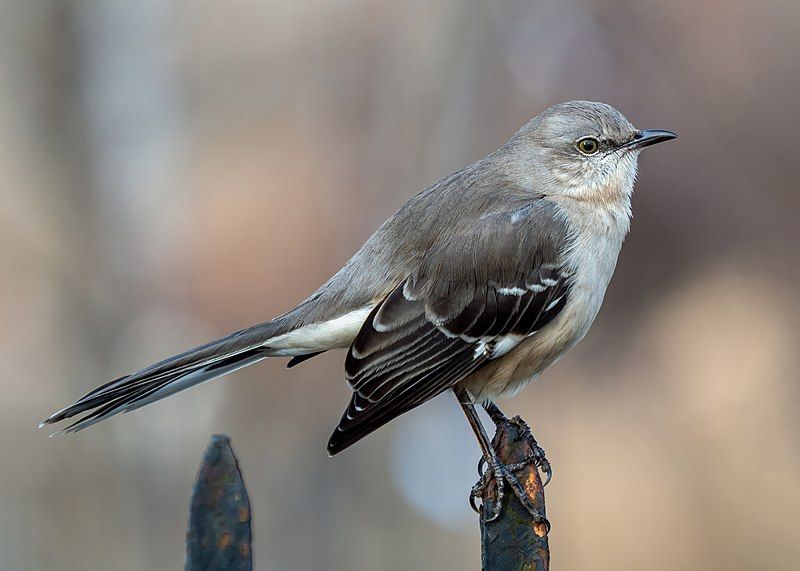
The northern mockingbird is a species of mockingbird that is commonly found in North America. This species typically stays in one area, but some northern birds may move south during extreme or harsh weather.
It is rare to see this species in Europe, as it is not a native bird. This species is known for its ability to mimic other birds and beautiful melodic songs. Its diet consists of mostly insects, fruits, and seeds.
They are also known to be quite territorial and will vigorously defend their nests against intruders. The northern mockingbird is a unique species with a wide range of behaviors and characteristics, making it a fascinating bird to observe.
| Kingdom | Animalia |
| Phylum | Chordata |
| Class | Aves |
| Order | Passeriformes |
| Family | Mimidae |
| Genus | Mimus |
| Species | M. polyglottos |
17. Hermit Thrush
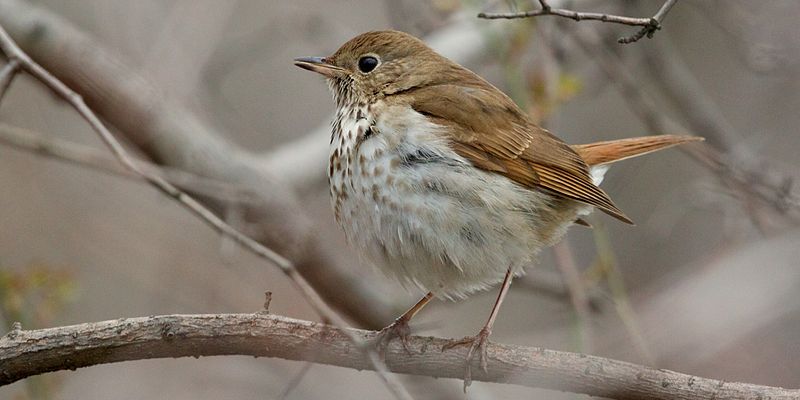
The hermit thrush is a medium-sized bird that is native to North America. It is related to the Mexican russet nightingale-thrush but not to the other species of thrushes that migrate to North America.
The scientific name for the hermit thrush, Catharus guttatus, is derived from the Latin word ‘guttate,’ which means ‘spotted.’ This refers to the speckled pattern on the throat and breast of the bird.
The hermit thrush is a colorful bird with a gray-brown back and wings, a white underside, and dark spots on its feathers. Its song is melodious and can often be heard during the summertime.
The hermit thrush is an essential species in the North American ecosystem, as it helps to control insect populations and disperse seeds.
| Kingdom | Animalia |
| Phylum | Chordata |
| Class | Aves |
| Order | Passeriformes |
| Family | Turdidae |
| Genus | Catharus |
| Species | C. guttatus |
18. Burrowing Owl
The burrowing owl is a unique species of owl found in North and South America. Also known as the shoco, this small owl is easily recognizable due to its long legs and distinctive features.
It is found in various open, dry landscapes, such as grasslands, rangelands, agricultural areas, and deserts. All these areas have one thing in common: low vegetation. This makes it easier for the burrowing owl to burrow and build its nests underground.
The diet of the burrowing owl mainly consists of insects, small mammals, and other small creatures found in these open areas. The owl is also known to hunt during the day, which is unusual for most owls.
This is why it is seen more often than other owls during the daytime. The burrowing owl is a highly adaptable bird that can make a home in various places.
It is also quite friendly, often forming flocks of up to a hundred owls in the same area. The burrowing owl’s adaptive nature and gregarious nature make it a unique and exciting species of owl to observe.
| Kingdom | Animalia |
| Phylum | Chordata |
| Class | Aves |
| Order | Strigiformes |
| Family | Strigidae |
| Genus | Athene |
| Species | A. cunicularia |
19. Northern Parula
The northern parula is a species of bird that belongs to the family of New World warblers. These birds are found in North America, from southern Canada to Florida, where they breed and nest.
They are small birds, usually growing to be around 5 inches in length, and they have a variety of bright colors on their plumage, primarily yellow, blue, and green.
The northern parula migrates south during winter and can be found in Central America and the Caribbean.
They inhabit various habitats, from mature deciduous forests to thickets and marshes. These birds feed on insects, spiders, and other small invertebrates.
They usually forage in the understory of the forest, often caught in the act of gleaning insects from foliage. The northern parula has a distinct song that is composed of a variety of whistles and trills.
This song is often sung from high up in the trees, making it easier to locate these birds. Breeding pairs stay together year-round and build a cup-shaped nest in the fork of a tree or shrub.
The female lays 4-5 eggs, which both parents incubate for 12-14 days. The chicks fledge in 10-14 days, at which time they can fly and forage on their own.
| Kingdom | Animalia |
| Phylum | Chordata |
| Class | Aves |
| Order | Passeriformes |
| Family | Parulidae |
| Genus | Setophaga |
| Species | S. americana |
20. Carolina Wren
The Carolina wren is a species of wren that is native to the eastern United States, from the extreme south of Ontario, Canada to the extreme northeast of Mexico. It is pretty standard and can be found in various habitats, including urban areas, forests, and woodlands.
The Carolina wren is a small, plump bird with a short tail, a buffy-brown back, a white throat, and a chest. Its song is a loud, chaotic collection of trills and whistles, and its call is an audible “teakettle.”
The Carolina wren is an adaptable bird that can feed on various insects and berries. It is also a vocal and active bird often seen fluttering around its territory, chasing away intruders and defending its nest.
The Carolina wren is an essential bird species in the eastern United States and is a welcome sight in many gardens and backyards.
| Kingdom | Animalia |
| Phylum | Chordata |
| Class | Aves |
| Order | Passeriformes |
| Family | Troglodytidae |
| Genus | Thryothorus |
| Species | T. ludovicianus |
21. Tricolored Heron
The tricolored heron is a small bird species native to the coastal parts of the Americas. It is also known as the Louisiana heron and is a solitary species, meaning it is not as social as other species of heron found in the Americas.
It mainly eats small fish, which comprise the bulk of its diet. The tricolored heron is typically seen near rivers, ponds, and other bodies of water and is easily recognizable by its distinct tricolor feathers.
Its feathers are dark blue, with a white head and a chestnut-colored belly. The tricolored heron is an important species in the Americas, as it is essential in maintaining coastal ecosystems.
It is a beautiful bird that can be observed in many parts of the Americas and is an integral part of many people’s lives.
| Kingdom | Animalia |
| Phylum | Chordata |
| Class | Aves |
| Order | Pelecaniformes |
| Family | Ardeidae |
| Genus | Egretta |
| Species | E. tricolor |
Conclusion
Pasco is home to a wide variety of birds, both native and migratory. The diverse habitats found in the county provide a perfect home for these feathered friends, creating a vibrant and colorful landscape.
Whether you’re an avid bird watcher or just out for a stroll on a sunny day, there’s plenty to see and do in Pasco to appreciate our avian friends.